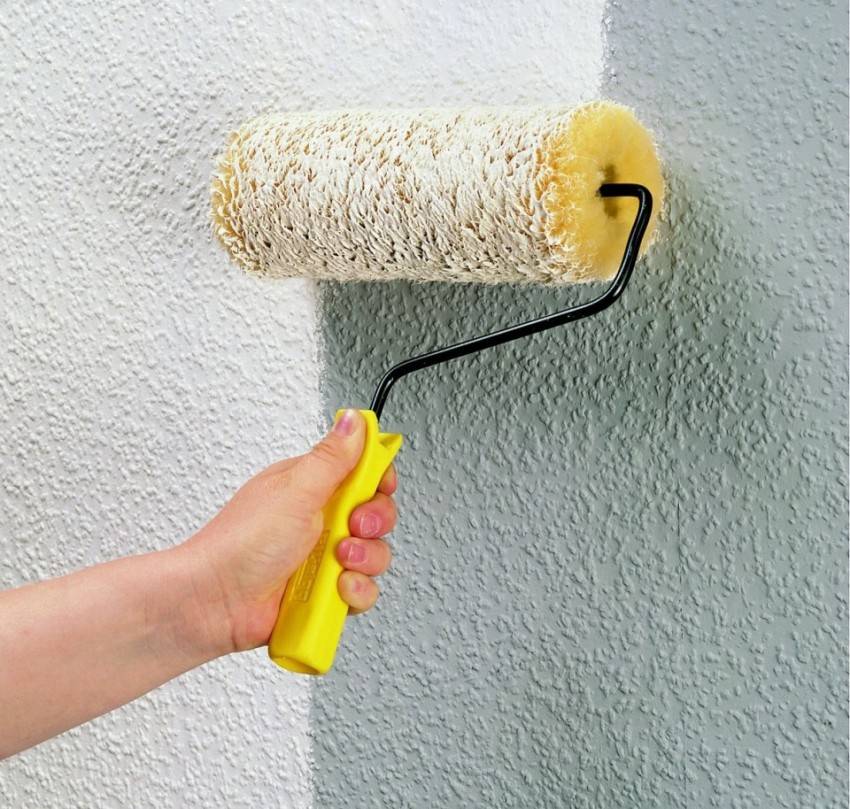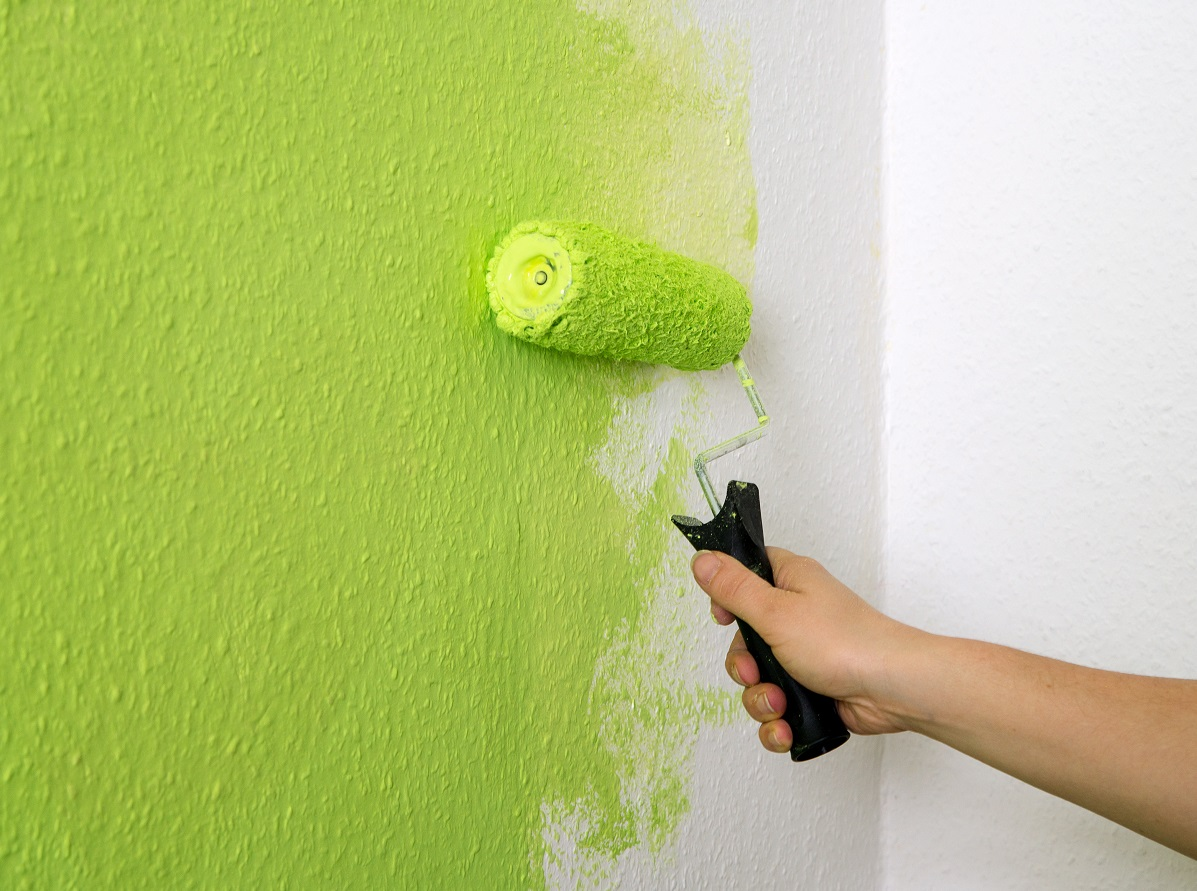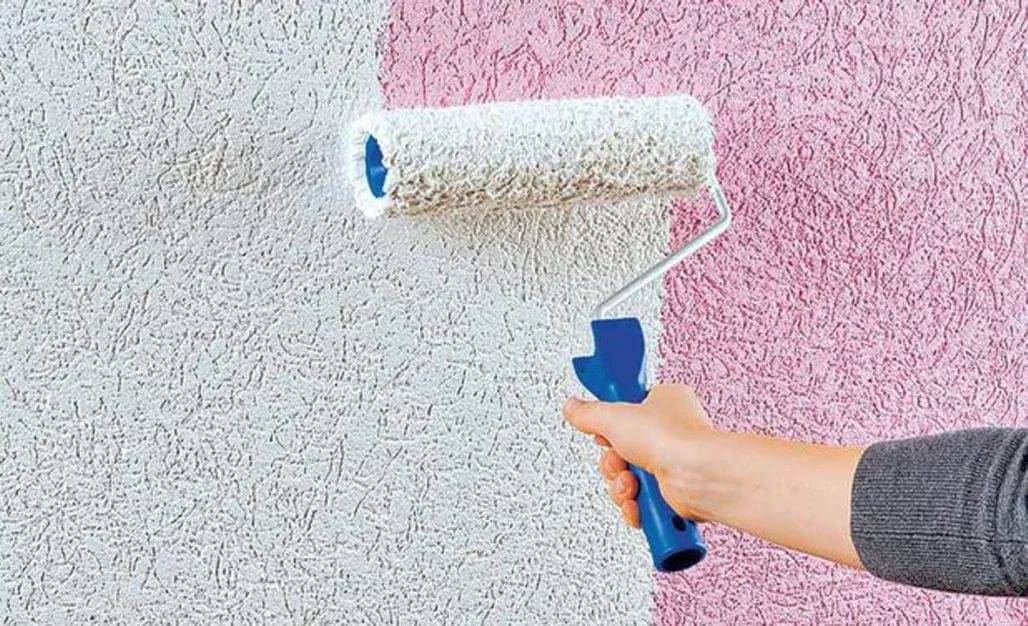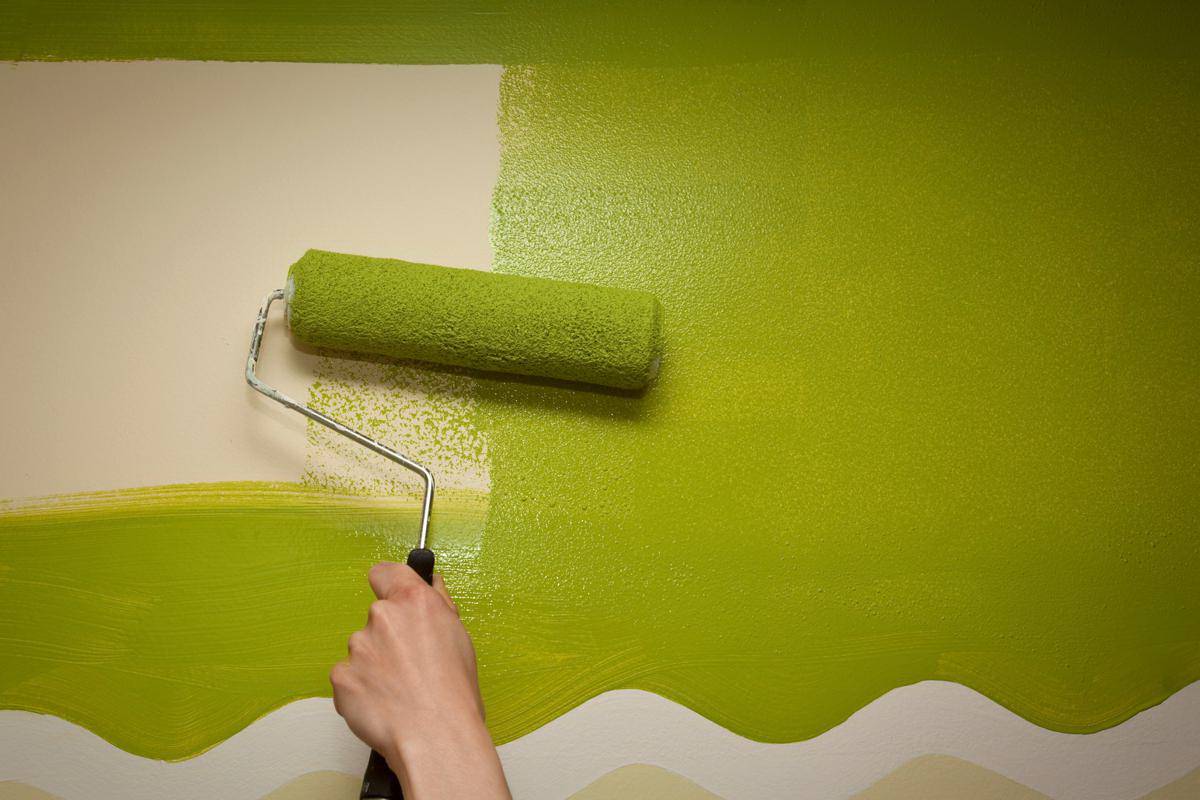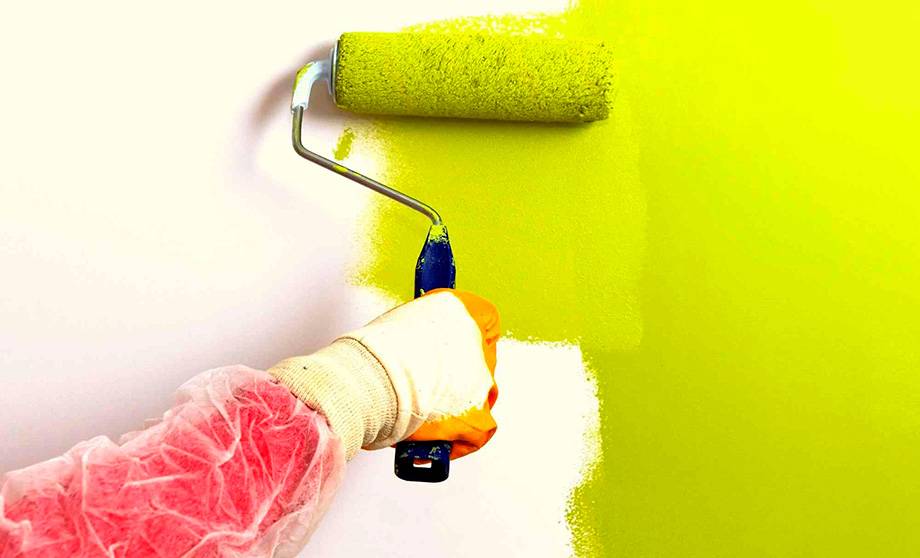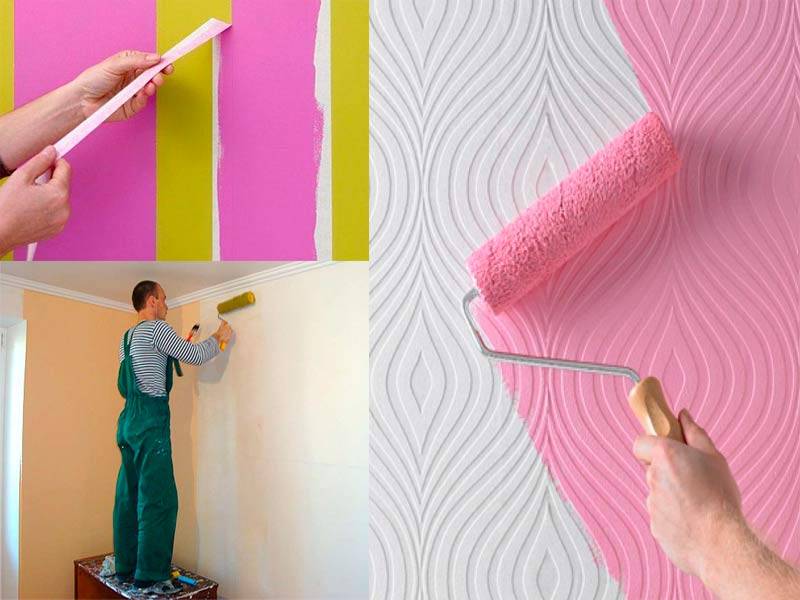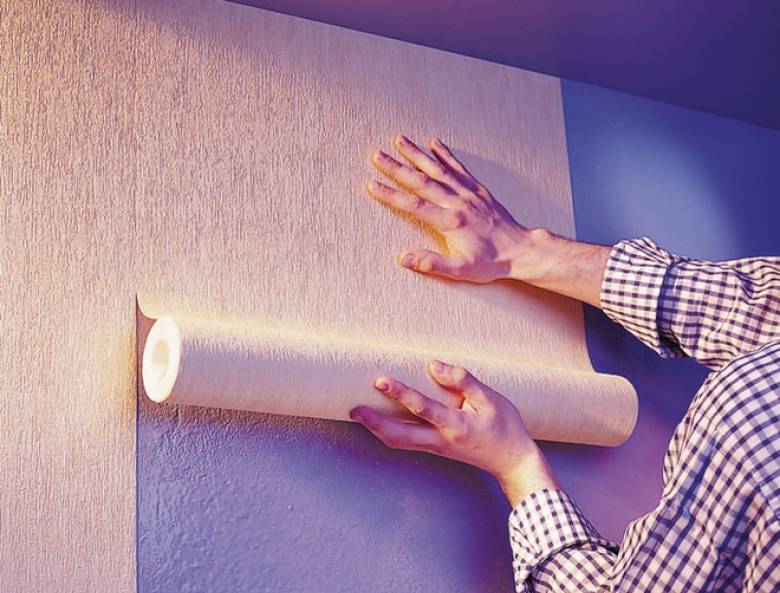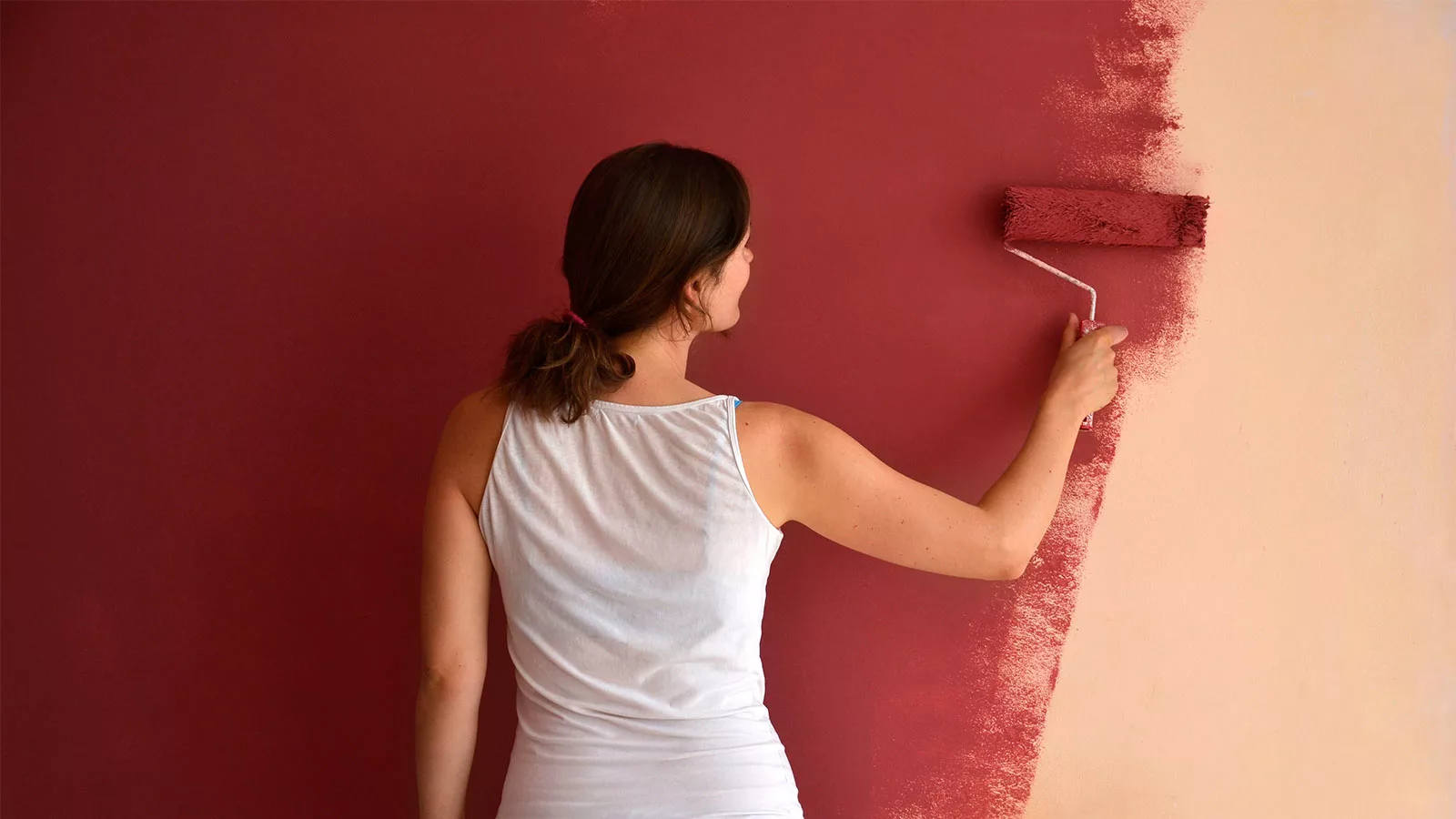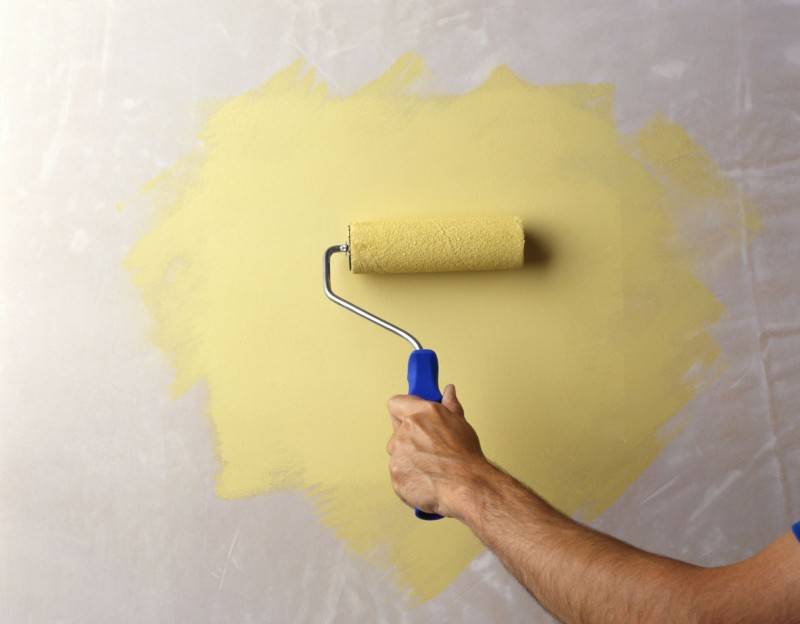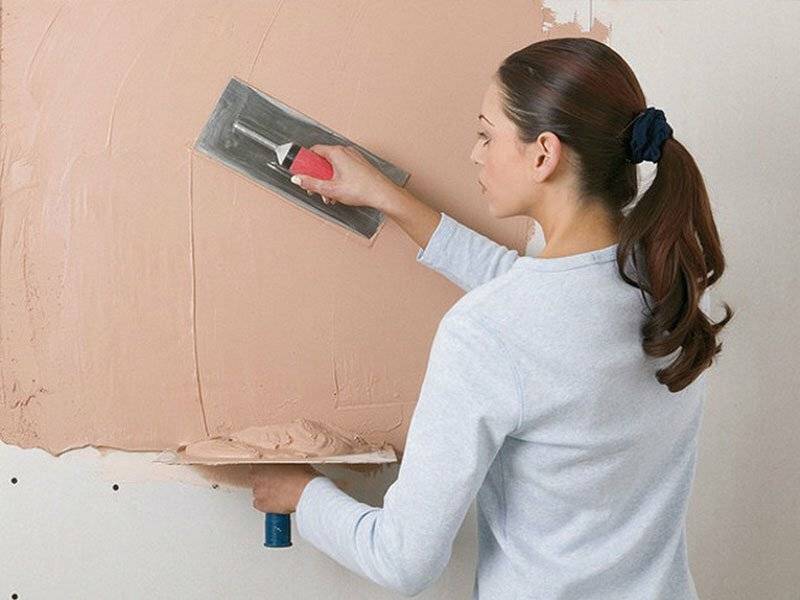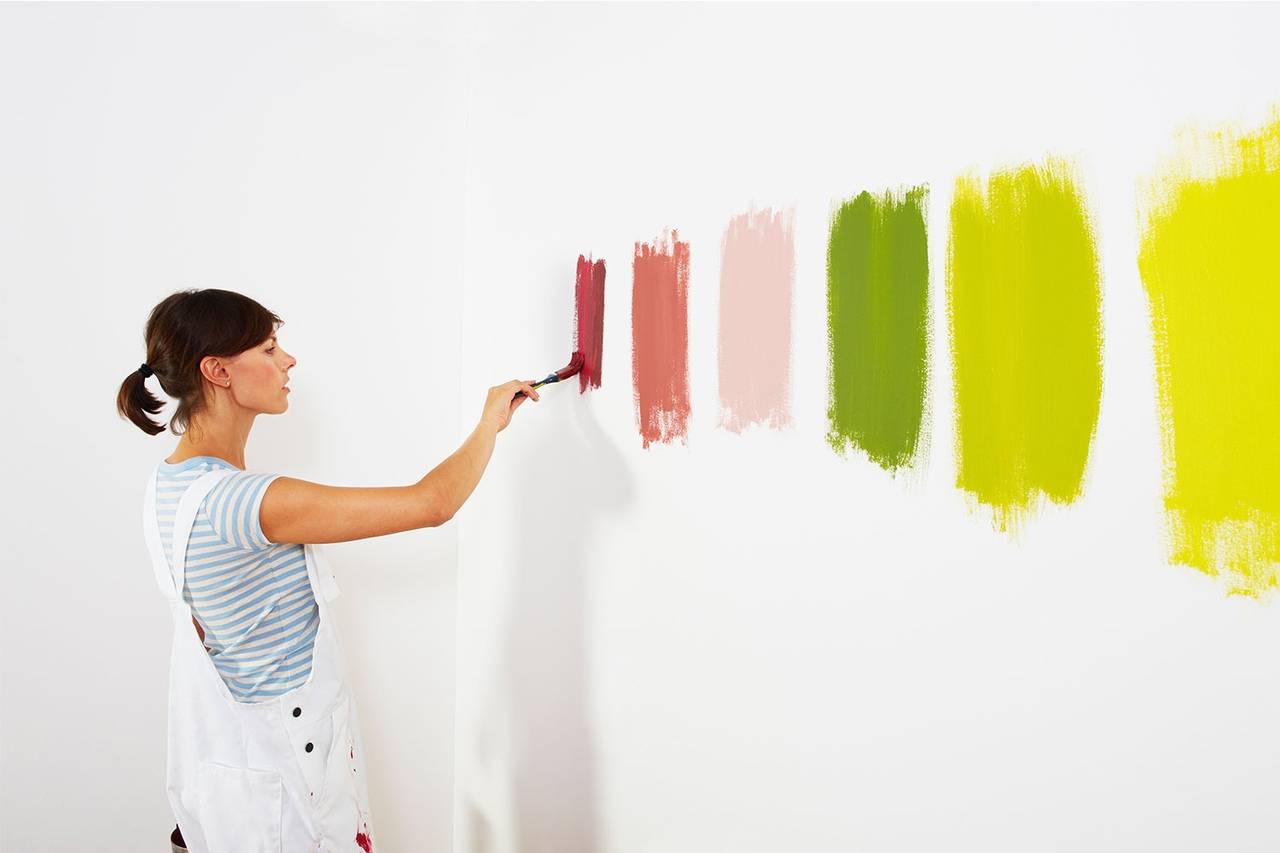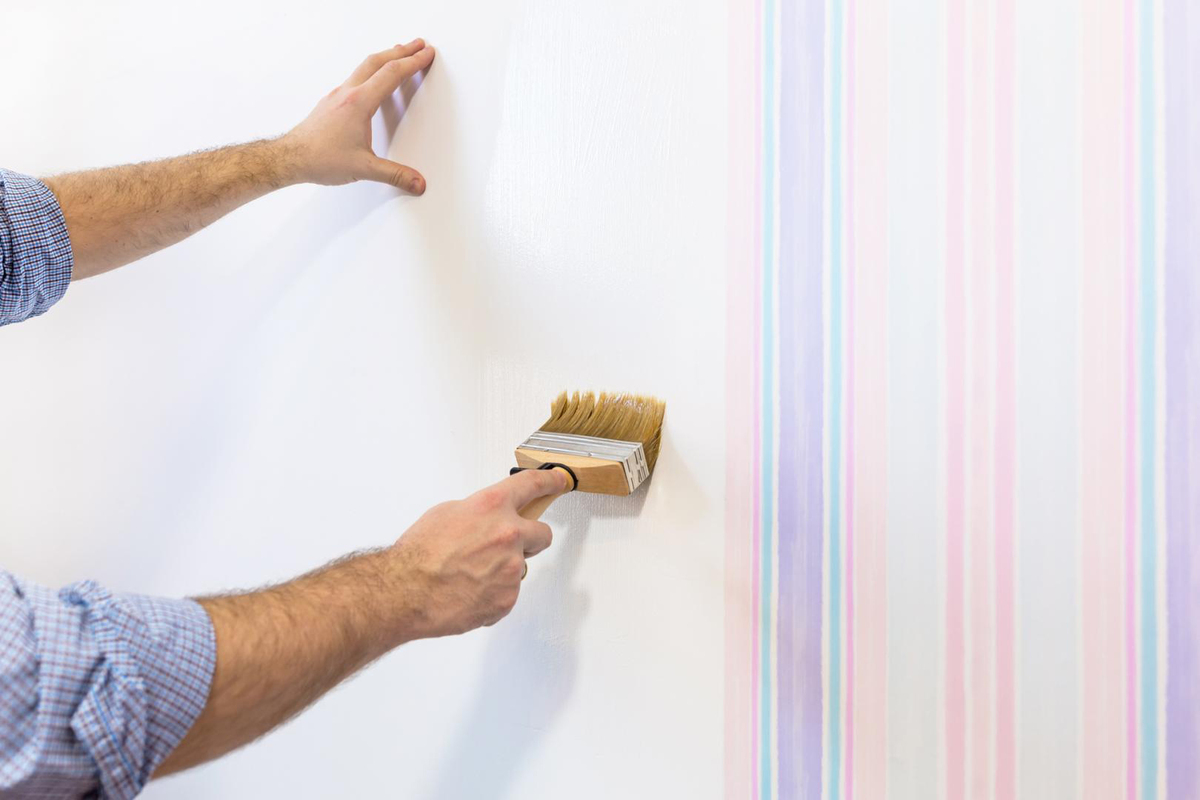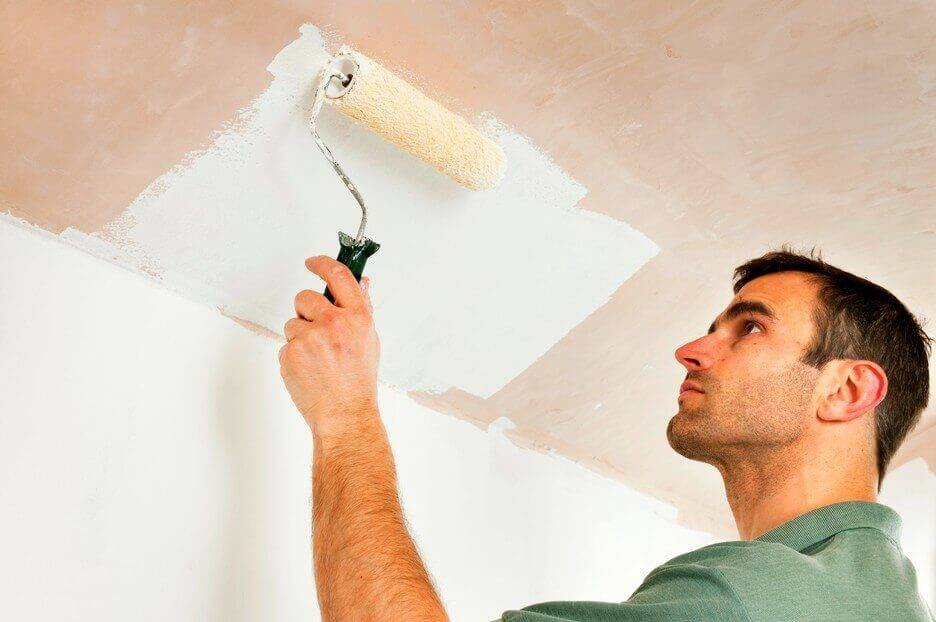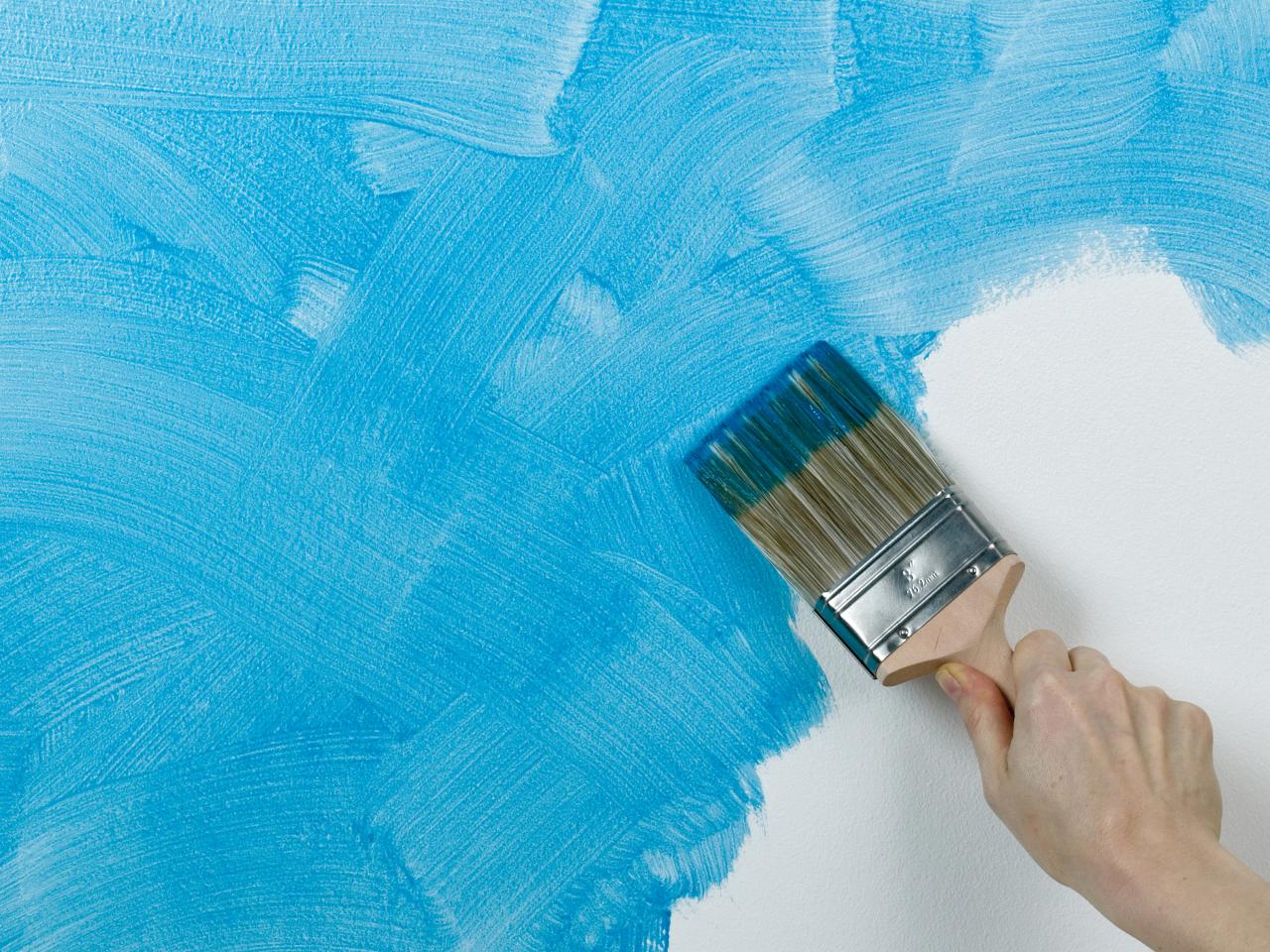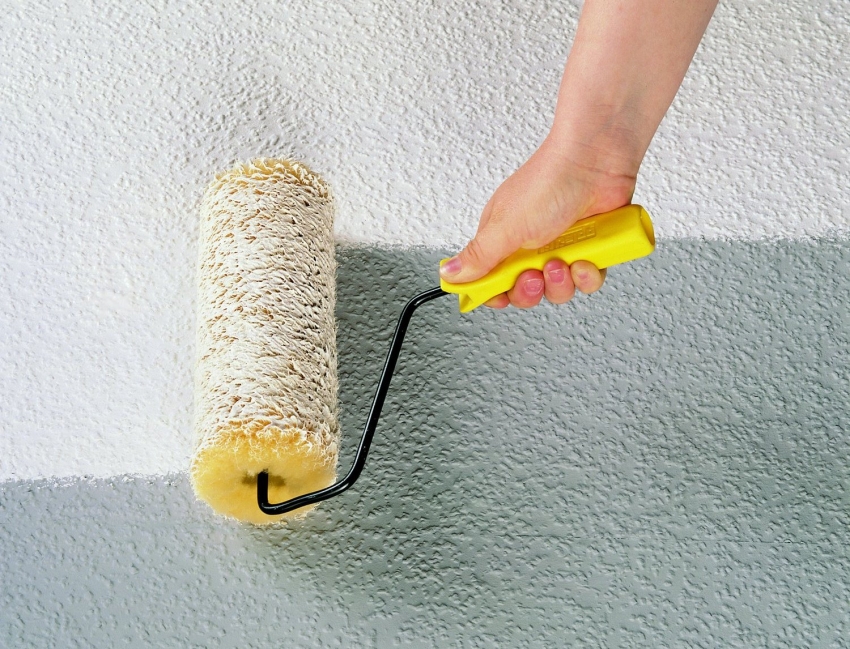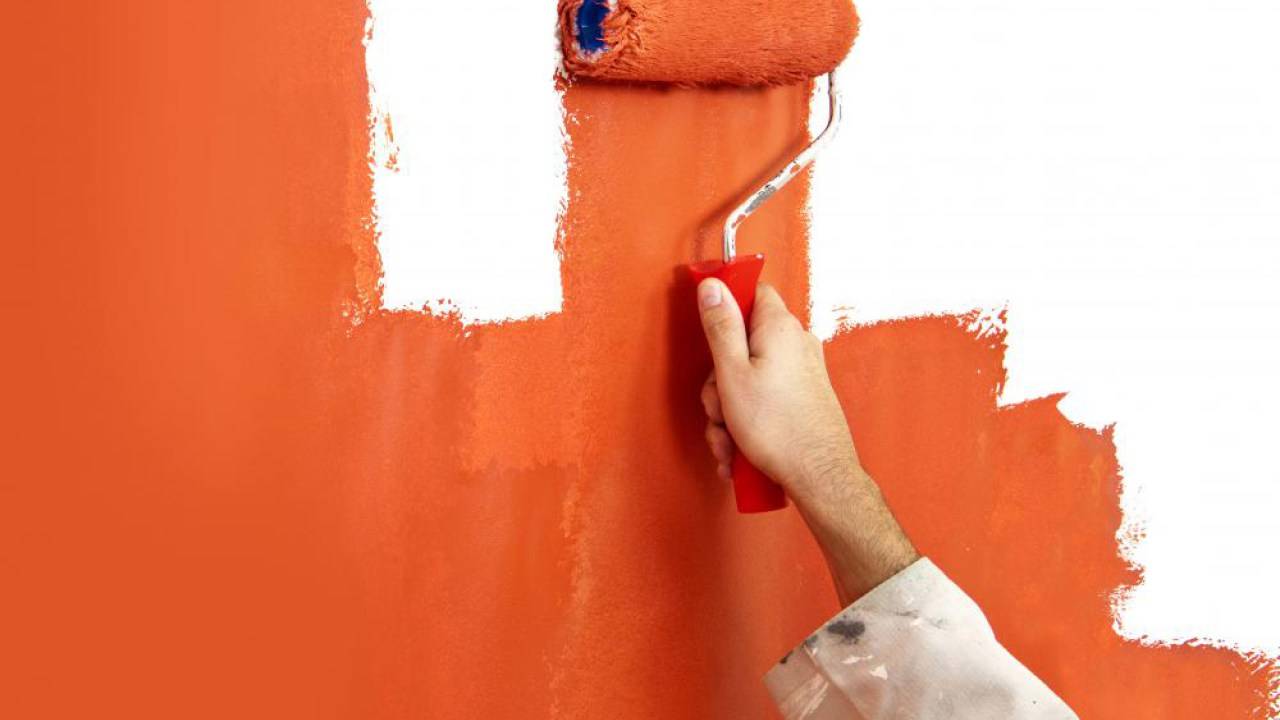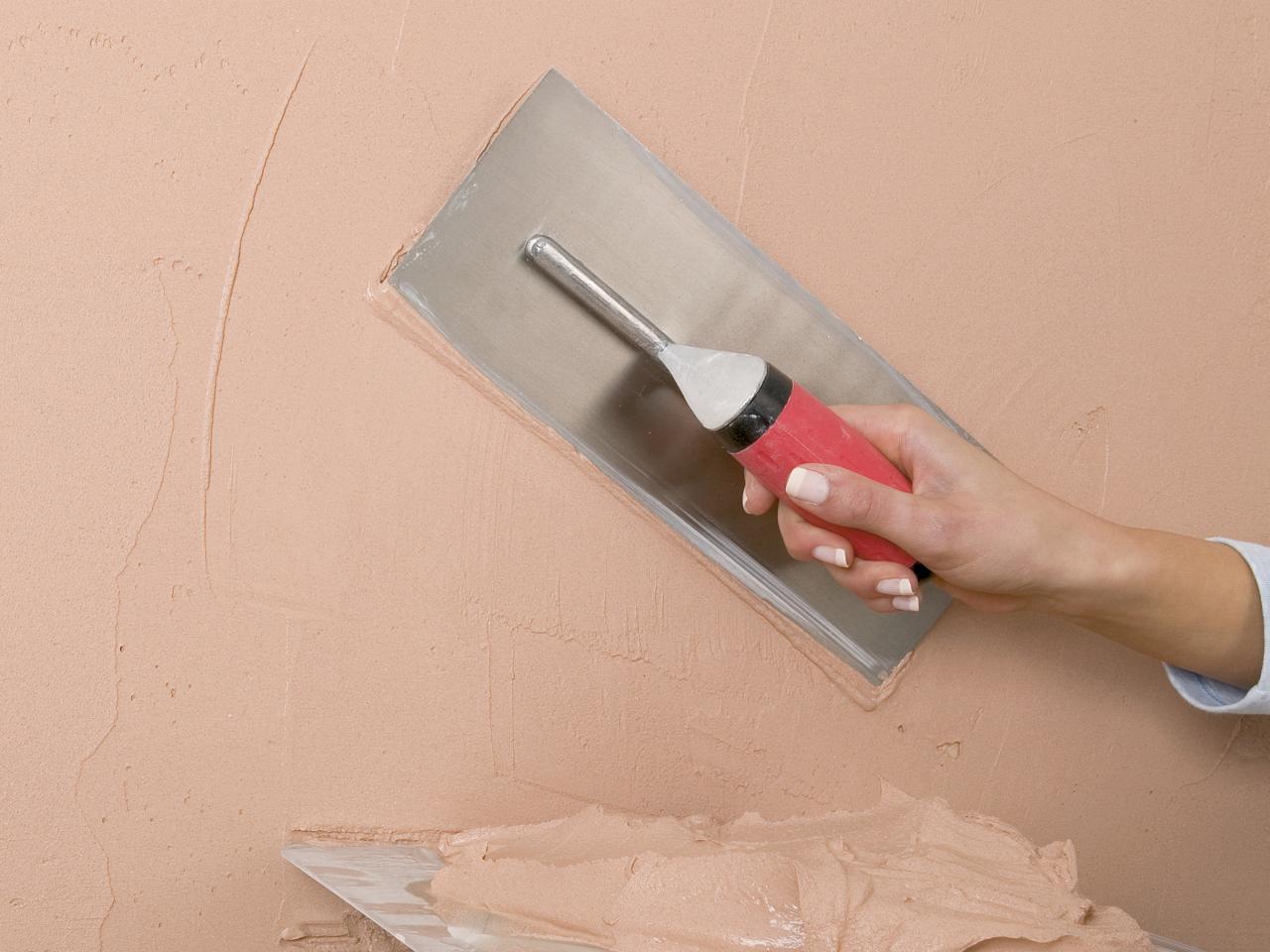What material is cheaper to install?
Repair of any complexity can be done independently, or you can entrust it to professionals.
With wallpapering it is easier: remove large pits or bulges, prime, glue. A professional team, of course, will do everything efficiently: the seams will be invisible, the pattern will be adjusted. But it will require about 120 rubles per square meter for carrying out these actions (prices depend on the city of residence).
The painting itself does not require special skills, but before that, the walls must be made perfectly even. This is time consuming and can create many problems. In order not to be disappointed with the result, contact a specialist for quality. The price of preparation for 1m2 starts from 400 rubles, painting - 140 rubles.
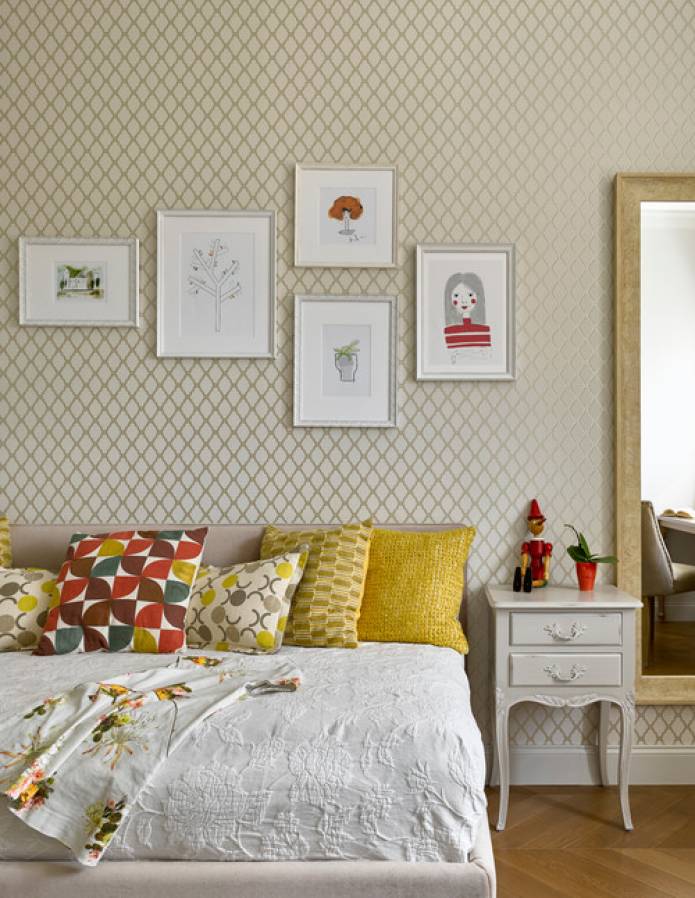

How many times is it permissible to do this?
Each case of painting is individual, and the quality may depend on the condition of the coatings, walls, room humidity, etc. Factors affecting the number of re-painting:
- Relief. The stronger the embossed pattern is highlighted on the wallpaper, the more difficult it is to paint over over time. A weak embossed pattern can be painted over for the third or fourth time.
- The viscosity of the paint. The more viscous it is, the thicker the film it will create on the surface. If you overdo it, then, firstly, the wallpaper will become very heavy, may come off, and secondly, the textured pattern with each painting will become more and more blurry, indistinct.
- Brush or roller pile. The shorter it is, the denser the paint will be, the smoother the painted wall will turn out. If you try to paint the wall with a short-nap roller several times, it will soon disappear. Buying embossed materials for painting will no longer make sense.
Attention
If you use wallpaper with a clear textured pattern, buy a fairly liquid paint and a roller with a long nap (or even better, a spray gun). The number of repeated stains can be increased up to ten to fifteen times.
Step by step instructions - painting walls
With painting, things are much simpler, but there are also some nuances here.
Steps, photo:
Description:
Step 1. Priming the wall
In order for the paint to lay down evenly, the walls after grinding need to be well primed.
It is very important to choose the right composition. The choice is influenced by the type of paint
Detailed information can be found on the Internet or on the product jar. Also, give preference to goods of the same brand, this is the key to a high-quality and stable result.
Step 2. Paint application
Divide the wall visually into 4 squares. They need to be painted over one by one, moving a roller with a short nap, first from top to bottom, then from side to side, and again from top to bottom. Avoid layering and level the layers straight away, so that there is no visible border between the segments while the first one is still wet, skip to the next one.
Step 3. Delicate staining
We start by painting the corners and junction points to the ceiling moldings. We use a small brush and a spatula in our work, which will limit the ingress of paint on the adjacent parts that do not need to be painted. Then the entire wall is painted. The paint is applied in two layers - for the first, it is slightly diluted with water (no more than 5% of the mass), for the second, this is not required.
As you can see, each of the heroes of our review has its own pros and cons. We have written, of course, not everything that we know ourselves, but this information will be enough to determine a leader for ourselves.
Features of the choice of paint
If you have decided on the type of painting, proceed to choosing the main thing - the paint itself. First you need to choose the type of paint. It should be water based - not oil based.Paint for vinyl wallpaper is acrylic (best), latex, dispersion, or water-based paint. Craftsmen prefer acrylic on latex base. Its resistance to sunlight, detergents, burnout is important, as well as its strength, environmental friendliness and speed of drying.
Today in building supermarkets you can find special paint for wallpaper. It can be immediately with the desired color, but white is more common, a dye (color) is added to it.
There are three main surface options:
- gloss (semi-gloss);
- matte (semi-matte);
- atlas.
If you need to paint a small or dark room, then it is better to choose the option with a glossy surface, but be prepared for the smallest dirt to appear on it. Matte paint is suitable for large rooms, it is not so whimsical to stains and touches. Use semi-gloss in the kitchen, and satin surfaces look great everywhere.
Painting walls instead of wallpaper with decorative paint
This decorative paint was created precisely to be used in place of wallpaper. Ease of application, a large selection of shades make decorative paint an indispensable repair tool.
Decorative paint, in addition to the above advantages, has a number of other advantages:
- The paint stays on the wall for about 9 years, without peeling and peeling.
- Decorative paint is resistant to mold, mildew, scratches, impacts, and does not fade in the light.
- A wall painted with decorative paint is very difficult to stain, but easy to clean. Unlike paper wallpaper, dirt practically does not stick to the paint.
- Thanks to the richness of colors, they can be mixed and obtained unusual beautiful shades.
- The wall does not collect dust thanks to the anti-static coating.
- The paint makes the wall perfectly flat without cavities and irregularities.
To paint the walls in the apartment instead of wallpaper, they must be carefully prepared. Before applying paint, the wall must be perfectly flat without roughness, cracks, and other things. It is worth remembering that applying paint itself does not take long. But the preparation of the wall, its alignment will make you sweat.
What else should be considered when choosing a material?

The main thing is to choose the right texture. If you stop at the correct, mathematically accurate drawing - a geometric pattern, the wall will come out very strict, monotonous. With an unpredictable and chaotic arrangement of the image (imitation of crumpled paper), it can appear rough and careless.
Not wanting to go to extremes, you can choose the middle ground - for example, a small texture in a chaotic pattern or zigzag bulges that soften messy lines. You can pick up a repeating pattern, but with intricately curved, streamlined lines, leaves, flowers that dilute the monotony and are not associated with geometry.
The size of the pictures is also important. Imitation of large cracks attracts the eye, and small cobwebs elude attention. But the larger the fragments of the images, the closer the object is visually perceived. Therefore, such a print on the wallpaper will not fit a small room, it will make it even smaller. For small rooms, it is better to choose a smooth canvas, a small chaotic texture or a small repeating pattern - up to ten centimeters.
It cannot be said that some drawings or textures are beautiful, fashionable, etc., while others are not. Each consumer will choose something according to their mood and discretion. If you are a fan of correct, repetitive, strict and clear lines - wallpapers with simple elements are suitable for you. And one more nuance: pronounced textures are not combined with glossy paint. Such work will look, to put it mildly, strange. Coarse-textured wallpapers and matte and semi-matte dyes are more organic.
How much can you repaint?
Unfortunately, it often happens that after wallpapering in the room, they need to be repainted in a different color. Let's say you didn't like the color or the interior has changed. Or maybe, after a certain time, the previous color just starts to get boring. A reasonable question arises whether it is possible to repaint the wallpaper and how many times it can be repainted.
Gone are the days when redecorating meant the obligatory re-pasting of wallpaper. The furniture had to be taken out, the old wallpaper had to be torn off, the new ones had to be glued. It took a lot of time and effort.
Today you can only repaint a certain section of the wall in the color you like, and that's it - the repair is over.
Manufacturers have taken care of their customers and produce textured wallpaper, the protrusion of which is sufficient to carry out painting work at least five times. Until the drawing is flush with the paint. Usually the quantity is indicated on the package, there are specimens intended for re-staining more than ten times.
But you won't be able to save money in this case.
It is also important what kind of glue they were attached to the wall. If cheap glue was used, then after the wallpaper “gains weight”, it will slide off the wall under its own weight.
It should be borne in mind that matte paints clog the picture, in contrast to glossy ones, which, on the contrary, emphasize it. It is advisable to use a water-based paint, it does not create crusts.
When repainting, you can experiment with the color scheme, for example, a combination of dark blue colors with white paint - you get a pastel color. And when mixing yellow and blue paint, a green tint comes out. If you mix yellow and red - orange.
Bright or color combinations are obtained by mixing green and red colors with white paint. You can experiment with your children, the main thing is not to forget what was mixed with what, in order to repeat this color in the future.
Pros and cons of wallpapering
Wallpaper has been known for several centuries. But new models appear on the market with completely different properties and characteristics. The pluses of wallpaper include:
- Before pasting the wallpaper, no special preparation of the walls is needed. Small defects in the walls will be hidden by the material of the wallpaper. The coating adheres well provided that the correct special glue is used.
- Wallpaper with its pleasant to the touch surface is able to create a unique comfort and warmth in the room.
- The paper and non-woven from which the wallpaper is made do not cause allergies in humans and animals. The ink layer is applied on them by typographic method. It is also absolutely safe for residents.
- Paper wallpaper is an excellent sound insulator. They perfectly keep the room warm.
- You don't have to be a professional to wallpaper. This work is available to anyone.
- The paper surface of the wallpaper allows the walls to breathe. This prevents mold and mildew from growing on them.
Cons of covering from wallpaper:
Wall painting scheme.
- Excellent adhesion of the wallpaper material to the wall creates problems with their removal before the next pasting.
- Surface contamination is not always easy to remove. Even washable wallpaper is not easy to clean.
- Some pets love to eat wallpaper. There is no harm from this for the animal organism, and the initial appearance of the coating loses its attractiveness.
- Paper-based wallpaper cannot be used for wall covering in bathrooms and toilets due to the high level of humidity in them.
- Covering from any wallpaper is not durable. They will have to be changed in a few years.
- Papered walls can be easily damaged by careless touch of any sharp object.
Is it possible to re-coat
It is permissible to paint the wallpaper a second time. Moreover, modern coatings can withstand several stains without spoiling the appearance. So, fiberglass and durable non-woven - up to 15 times. But there are also limitations.For example, a relief pattern on wallpaper is usually painted no more than 5-7 times, then it will be heavily blurred. Also, it will not work to apply light paint over 2-3 layers of dark - the final tone will be ugly.
Before re-painting, you need to make sure that the old coating is adhered firmly, there are no flaking areas. Otherwise, you need to sand the base well, prime it and only then start working.
Expert advice
The scheme for calculating the area of \ u200b \ u200bthe room for gluing wallpaper.
- Colors when painting walls can be combined within a single room.
- Wallpaper can hide some errors on the surface of the walls.
- It is recommended to change the paint layer every 2 years, the wallpaper can last 5 or more years.
- Non-woven wallpaper can be painted and recolored up to 5 times.
- The best material for finishing uneven walls with cracks is fiberglass wallpaper. They can be glued in rooms even with high humidity.
- In small rooms, plain walls look better. Drawings of even small size visually conceal the volume of the room.
- Water-based paint is more environmentally friendly and safe for humans, but does not have wear resistance.
- Acrylic and latex based paints are quite durable and safe in all respects.
- Vinyl can release toxic substances into the atmosphere.
- Drywall is an excellent finishing material for preparing walls for painting and pasting.
- It is recommended to cover moisture-resistant drywall with a primer with the addition of white water-based paint. It will slightly hide the green color of drywall, which can show through paint or wallpaper.
- It is better to use GKL-1 acrylic primer on drywall, which is applied with a brush.
- The seams between the sheets of drywall are glued with lavsan or fiberglass tape-serpyanka, resembling in appearance an ordinary medical bandage. Then the seams are putty and leveled.
- The paint is more resistant to temperature extremes than wallpaper.
Accommodation should be comfortable and cozy. For this, at all times, people have decorated their homes with various ornaments, tapestries. Modern materials and technologies make it possible to do this in a better quality. You can use water-based or acrylic paints for finishing, wallpapers of different types.
Each of these materials has its own advantages and disadvantages, so there is no definite answer to the question of how to decorate walls. To paint or glue - each homeowner makes this choice on his own, focusing on his aesthetic taste, financial capabilities and experience in repair work.
Choice
Modern stores selling goods for repairs have a very wide range of paints, which complicates their choice. All paints are divided into 2 large groups: paints for interior and exterior works.
For painting walls and ceilings in the house, it is imperative to use paints for interior work - they are not toxic, practically do not have an unpleasant odor.
Water-dispersion paints are very popular and convenient for interior decoration. They, in turn, are divided into latex, silicone, vinyl and acrylic. These paints have many advantages: they support natural moisture exchange, are resistant to fading and abrasion.
The new generation of paints can easily tolerate even wall washing. A huge advantage of water-dispersion paints is the possibility of their tinting, which gives boundless scope for imagination. The same reason is also a minus - it is necessary to clearly calculate the amount of paint required for the work, otherwise when you re-hover paintwork with tinting paste, you can make a mistake with the color intensity.
Basic types
There are many types of wallpaper that can be used for painting. They differ in the price category, the duration of wear, the individual characteristics of the structure and the materials from which they are made.

Glass fiber
Glass fiber is made of thick paper or fabric with the addition of fiberglass. Such a canvas is very durable, stretches and does not settle after the walls are completely dry. This type will visually smooth out all the irregularities on the surface. Such a canvas should be painted with acrylic or latex paint, other types on it are poorly absorbed. The main advantage of this wallpaper is the ability to wash surfaces using a regular brush and a special tool without harming the walls and pattern. Glass fiber is quite expensive and, because of this, not suitable for everyone.
Non-woven
Non-woven wallpaper is a very dense type of canvas. A feature of this type is the ability to visually eliminate small irregularities on the surface.
When gluing, it is important to apply glue only to the wall, otherwise the canvas will periodically lag behind. Non-woven wallpaper does not tear, stretch or swell due to excessive moisture
You can repaint such a coating up to 20 times without losing the quality of the picture.
Vinyl
Vinyl wallpaper for painting has its own varieties:
- For the kitchen - such a canvas consists of 2 layers of vinyl and has increased resistance to moisture. This look can be washed with a brush and detergent. The number of paints is from 2 to 5 times.
- Foam vinyl with PVC outer layer. This type has a deep and soft relief, covers all the unevenness of the walls and holds the paint for a long time. You can repaint the wallpaper up to 10 times, but it is recommended to carry out no more than 8 procedures.
- Flat vinyl canvas - has a soft and fine structure, when painting, the relief will be smoothed. This look uses traditional vinyl and silk fibers.
Impregnated paper
Today, impregnated paper finishing material is often used to smooth out defects on the wall. This material is treated with a special solution that creates a water-repellent effect. Paper wallpaper has the following advantages:
- cheap cost;
- decorative appearance;
- the possibility of repeated repainting;
- environmentally friendly materials that are safe for human health.
The disadvantages include:
- violation of the structure with frequent staining;
- the likelihood of bubbles;
- the appearance of folds when gluing.

Linkrusta
Linkrusta - canvases with a large relief on the surface, which are made by hand from wood flour, linseed oil and wax. For gluing such wallpaper, specialized glue is needed, and the finishing material should be pre-moistened with warm water. These wallpapers have deep relief, long wear life and increased resistance to moisture and damage.
Liquid
Liquid wallpaper compares favorably with analogs in wide variability, which includes combined colors and texture features. Manufacturers of liquid wallpaper do not recommend painting the surface for the following reasons:
- after painting with water-based paint, the coating cannot be restored after damage;
- liquid material cannot be washed and returned to its original appearance;
- wallpaper that is coated with varnish or acrylic paint cannot be removed to transfer a fragment.
Painting wallpaper for painting in two or more colors
If you want to create an original interior, you can paint the wallpaper in two colors. In this case, you can combine both close shades (for example, pastel beige and pink or gray and blue), and contrasting (usually a combination of light colors with bright ones). Also popular is the gradient coloring of the wallpaper, which creates a smooth transition between similar shades.
Borders, moldings, wallpaper tapes and other dividers can be used to trim the borders between flowers.
Coloring options
Before choosing the most preferred way of painting the wallpaper in two or more colors, you should decide what effect you want to achieve.The thing is that the classic style provides clear boundaries between the selected shades, while creative interiors can be created using arbitrary coloring.
Consider the most popular options for using paints on wallpaper:
- Horizontal painting in the form of alternating stripes of the same or different width, or dividing the wall into two colors. The first option will allow you to convene a bright accent and is used, as a rule, on one wall. The second - visually expands the space, however, it necessarily involves the use of dividers.
Horizontal dyeing in the form of alternating stripes
Vertical stripes. You can draw them along all the walls or select only some areas. This painting option significantly raises the ceilings.
Painting one wall in a brighter or more saturated color compared to the main shade. This technique allows you to create an accent and zone the space. An interesting effect is achieved if you paint not only the wall, but also the ceiling in the selected color.
Create gradient transitions on one or adjacent walls. Correctly selected shades will create a truly unusual and cozy interior. Gradient coloring
Frame design, providing for the creation of bright frames or inserts on plain surfaces. This technique is perfect for highlighting pictures, clocks, TVs.
Selection of relief structures. You can paint niches or ledges with a different color, which will significantly transform the room and give it depth. Painting niches in a different color
Division of space. This option allows you to select several zones in the room, for example, the study and recreation area in the nursery. It is also actively used in the design of studio apartments. In this case, you can paint the kitchen area in one color, and the living room in another. At the same time, it is not necessary to mask the borders of colors.
Creation of unusual geometry from two or more colors. Geometric patterns look very bright and stylish. As a rule, they are created on wallpaper pre-painted in one color. It can be not only classic circles, rhombuses, cells and zigzags, but even strokes or waves. Creating geometry from multiple colors
Creation of entire compositions. When painting wallpaper, you can create not just patterns, but real drawings. Imitation of clouds, sea, trees or something else looks very interesting on the walls.
Wallpaper for painting gives complete freedom of creativity. They allow you to embody the most daring design ideas into reality. Moreover, all actions can be done by hand and make your interior truly unique.
Styles
The designer furnishings of the apartments offer dozens of different styles. Among them there are those that will help turn the existing disadvantages into advantages.
Loft
Rough industrial style does not imply that the walls of the room will be perfectly smooth. Deliberate negligence of decoration is what is inherent in this direction. A rough concrete structure or uneven brickwork will look appropriate in such an interior.
Dark staining
Attention
Shades of black and dark gray are rather gloomy, but they perfectly hide the existing differences in height and minor defects.
Ombre technique
This type of staining has long stepped over the thresholds of beauty salons. Used even in clothing design, mouth to create spectacular interiors. Graduating shades of the same color from saturated to washed out will help brighten surfaces with imperfections.
Painting problematic walls without prior alignment is a complex and exciting task at the same time. After studying the advice of professionals, you need to choose the type of wall covering - wallpaper or special paint. Do not be afraid to experiment: sometimes a non-trivial approach leads to amazing results, because you can create an attractive and uninterrupted home interior.
Criterias of choice
When choosing a paint, one should take into account the type of wallpaper, the room in which the work will take place and the degree of light reflection of the substance.

Wallpaper type
A certain type of paint is suitable for each type of wallpaper:
- the paper roll is better painted with a water-based substance;
- non-woven coating must be painted with water-dispersion paint;
- linkrusta is painted with oil, wax or acrylic paste;
- for glass wallpaper you need to use acrylic or latex paint.
Room type
Depending on the type of room, the type of paint is chosen, since over time, the wrong selection of materials can worsen the condition of the walls. For rooms in which there will be high humidity, it is better to use acrylic and latex substances. The space that will be permanently exposed to sunlight is best painted with latex paint.
Light reflectance
Each paint has a different degree of light reflection and is divided into the following categories:
- semi-matte - does not fade under the sun's rays;
- matte - absorbs an excessive amount of light;
- glossy - increases lighting;
- satin - resistant to sunlight, creates shine.
What types can be painted
Not all canvases can be painted, since a certain group of wallpapers is suitable for this:
- non-woven;
- paper;
- fiberglass;
- liquid;
- linkrust;
- vinyl.
Each of the types can be patterned or monochromatic, in the form of a painting canvas.
Smooth
There are 4 main types of smooth wallpapers:
- non-woven;
- liquid;
- impregnated paper;
- fiberglass.
Such canvases are used not only to paint a wall in a solid color, but also to hide irregularities on the surface. A common type of smooth wallpaper is non-woven. It has several advantages over other types:
- does not affect human health;
- the material stretches and does not settle after drying;
- hides irregularities on the surface of the wall;
- painted with light water-based paints.
This type also varies in density. The denser the canvas, the better it will mask the unevenness on the wall. Also, such wallpapers keep the formation of cracks on the surface.
With small patterns
Wallpaper with small patterns is purchased to decorate background coatings in the house. Due to the fact that the drawings on the canvas are small, they are easy to join, which speeds up the gluing process.
Common patterns are flowers and geometric shapes. The first type is suitable for a recreation room and will be harmoniously combined with any type of design, and the second - for playrooms or children's rooms. Plaid canvases are also often used in combination with dark or neutral colors. This type emphasizes the rigor of home design. For painting, impregnated paper or vinyl wallpaper with small patterns is suitable.
With large ornaments
Many people are afraid to use canvases with large ornaments, because they mistakenly believe that this type is only suitable for very large rooms with spacious rooms. But, despite this, modern designers often use just this look to decorate small living rooms.
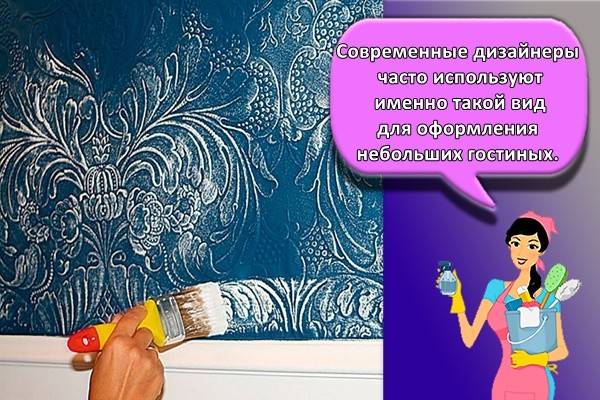
Drawings can be very different:
- horizontal or vertical stripe;
- geometric objects;
- stylized geometric shapes;
- flowers.
The following wallpapers are suitable for painting canvas with large ornaments:
- non-woven;
- vinyl;
- linkrust.
With different relief
Special attention should be paid to textured wallpaper, which again became popular and fashionable among designers around the world. These canvases copy any coating and convey its structure.
There are such types of relief:
- volumetric drawing that is similar to stucco molding;
- small patterns that are slightly felt and are poorly visible;
- medium relief with clear borders of the pattern and convex structure;
- volumetric patterns.
You should buy such canvases for painting by choosing from these types:
- Impregnated paper.
- Vinyl.
- Fiberglass.
- Non-woven.
The entire list of wallpapers has a long lifespan, can be easily painted and combined with embossed images.
Pros and cons of painting walls
Scheme for calculating the required amount of paint for painting walls.
Wall painting has also been used since ancient times. The materials for this type of coating have been used and are still being applied to this day: from chalk and lime, to modern, odorless, quick-drying paint and varnish mixtures. Pros of painting:
- During the preparation of the walls for painting, some improvement of the room takes place. After all, the walls are treated with antiseptics, primers that destroy mold and other microorganisms. With the correct preparatory work, cracks disappear from the walls, which are a haven of infection.
- If there is no need to paint the entire wall, but only need to update and refresh a certain part of it, this can be done quite quickly and cheaply.
- Painted walls can be washed. From such a coating, dust and dirt, traces of a felt-tip pen or marker, stains from various drinks such as coffee are easily wiped off.
- The painted surface does not attract even the most playful pets.
- A wide variety of brands and grades of paints makes it possible to create various interiors, using the color saturation and texture of the resulting surface.
The scheme for painting a concrete wall with a roller.
Minuses:
- Preparing walls for painting is a rather laborious and lengthy process. The work requires some skill in using various tools.
- Painting fresh walls presents some challenges for the lay painter. Professionals take a lot of money for this work.
- Painted walls should be cleaned regularly, as dust particles from the air tend to fill the smallest pores in the paint. The paint with a glossy surface is somewhat protected from this.
- Even the most resistant paint has its own tensile strength in relation to mechanical stress. She does not withstand strong blows.
- You can apply any pattern to the walls using special designer paints, but such work is expensive. Textured painting is also not cheap. Monotone color is cheaper, but it is more suitable for offices and industrial premises, rather than apartments.


